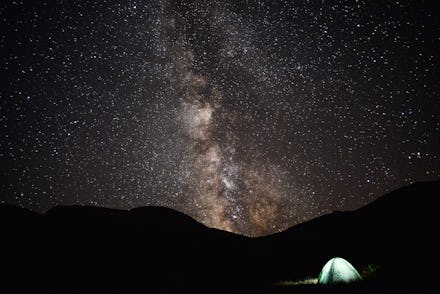Scientists Just Spotted Something in Space That "an Alien Civilization Might Build"

Space is large beyond comprehension. That's why it's called space — most of it is a whole lot of nothing.
Scientists, however, are increasingly feverish over a new Kepler Space Telescope discovery between the constellations Cygnus and Lyra. A series of irregularities between a star and the light it emits has led at least one expert to conclude that the star is being orbited by a number of strange objects, which could be more than just asteroids.
"This looked like something you would expect an alien civilization to build," Jason Wright, an astronomer from Penn State University, told the Atlantic this week. Wright added that the "swarm of megastructures" could be related to be extraterrestrial efforts to collect and farm energy from the star.
Beginning in 2009, Kepler began a four-year period of observation of the area between Cygnus and Lyra. The work left scientists with no doubt that even if aliens weren't whizzing past on Jetsons-style aerocars, the region was worth increased exploration.
The observation period yielded a number of periodic dips in the light emitted by stars. Spotting the dips has historically been how stargazers have identified distant planets. The dips are caused when the planet traverses the path between the star and Kepler, causing an irregularity — essentially a quasi-eclipse. But this star, observers noticed, had an unusual light pattern, suggesting a large amount of matter was closely orbiting a mature star, which normally would have enough mass to engulf such objects in a flash.
So much data was collected that computers proved insufficient. Scientists at Yale University launched a program called Planet Hunters in 2010, which opened Kepler's data to the public in a challenge to crowdsource the patterns and sleuth out the hidden worlds they revealed. It was these planet hunters who flagged the unfamiliar — unique — light pattern.
Searching for alien life is nothing new. Efforts date back to the 19th-century inventor Nikola Tesla and probably long before. In more modern times, NASA has funded Search for Extraterrestrial Intelligence initiatives since the late 1960s.
If the strange floating masses between Cygnus and Lyra were designed by foreign creatures, the next step toward identification would require large radio dishes to be aimed at the star to determine whether the objects were emitting unusual radio activity, scientists tell the Atlantic. If those results were promising, scientists would then use the Very Large Array in New Mexico for further confirmation that the waves came from a technological source. The first look is expected to take place in January.
But until then, in the words of special agent Fox Mulder, "The truth is out there."